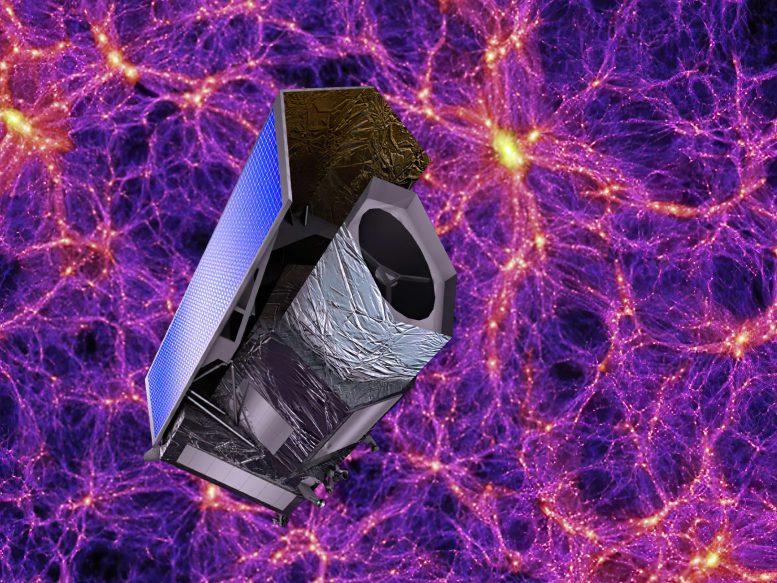
ESA’s Euclid mission is a highly ambitious project undertaken by the European Space Agency (ESA) to investigate and understand the nature of two enigmatic components of our Universe: dark matter and dark energy. Launched on July 1, 2023, the spacecraft will observe billions of galaxies up to 10 billion light-years away to construct the most accurate 3D map of the Universe ever made. Credit: ESA
Euclid, a space mission led by the European Space Agency (ESA) that includes a massive optical camera designed and built by University College London (UCL) researchers, will map the large-scale structures of the universe to better understand two mysterious components: dark matter and dark energy.
Everything that we can see and detect in the world around us – the stars, galaxies, flowers, our bodies, atoms – represents just 5% of the universe. The rest of it, according to current theories, is made up of two components: dark matter and dark energy. Their existence is inferred indirectly. Dark matter keeps galaxies together; dark energy is hastening the expansion of the universe. But what they are is unknown. Now, a telescope has been launched into space to help unravel this mystery.
Professor Tom Kitching, from UCL’s Mullard Space Science Laboratory, is one of four science coordinators for the European Space Agency-led Euclid mission. He says the data it brings back has the potential to determine whether or not dark energy is “vacuum energy” – the energy of virtual particles popping in and out of existence in empty space. If so, fundamental theories of particle physics will need revising, as this vacuum energy would need to be much stronger than current theories predict. If not, it is Einstein’s theory of gravity that may be wrong. “Either way would be a revolution in physics,” he says.
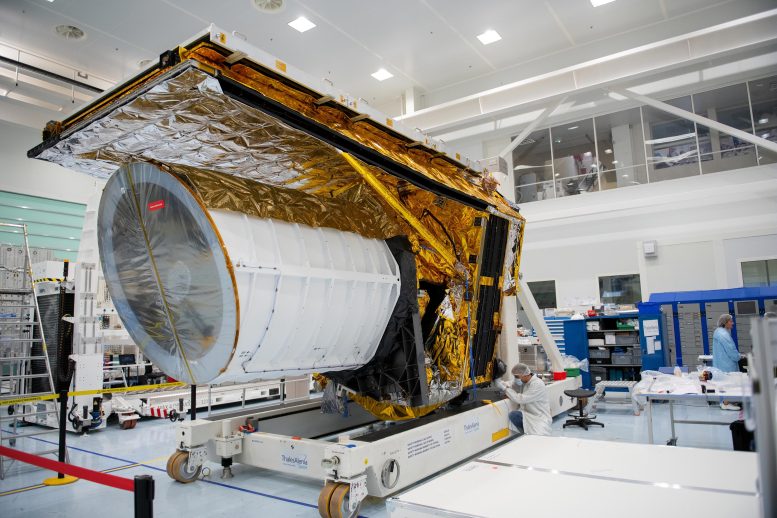
A replica of the Euclid spacecraft at Thales Alenia Space’s premises in Cannes, France, in 2019. Credit: Stephane Corvaja/ESA
The Consortium Behind the Euclid Mission
The mission is a massive collaborative project – the consortium that proposed it alone consists of 2,000 scientists and engineers across 15 countries. The telescope has two instruments. One, the Near Infrared Spectrometer and Photometer (NISP), will capture light from the invisible, near infrared spectrum. The other, called VIS, will capture visible light. Professor Mark Cropper (UCL Mullard Space Science Laboratory) (pictured below) has led on designing and developing the VIS optical camera for over 16 years, working with teams at UCL, Open University, and across Europe.
The camera, one of the largest ever sent into space, will take high-resolution, panoramic images of a large swathe of the universe, going back 10 billion years and covering a third of the night sky. Using these data, astronomers will measure the shapes of two billion galaxies and use a technique called weak gravitational lensing – seeing how light from distant galaxies has been bent by the gravity of intervening matter on its way to the telescope – to infer the large-scale distribution of visible and dark matter more precisely than has been possible before.
Peering Into the Past and the Future With VIS
As observing distant galaxies allows us to look back in time, astronomers can analyze how dark matter has evolved throughout the universe’s history. This gives insight into the interaction between dark matter (which binds galaxies together) and dark energy (which pushes them apart).
VIS’s wide field of view means that, while it will take images nearly as sharp as the Hubble Space Telescope, it will cover a much larger area of the sky – covering the same area in one day as Hubble covered over 25 years. Each image would require 300 high-definition TV screens to display. Over six years it will allow the shape of more than 1.5 billion galaxies to be measured. “These are huge, unprecedented images,” says Professor Cropper.
Construction and Testing of the VIS Camera
The VIS camera was a pan-European project led by UCL’s Mullard Space Science Laboratory. Its structure and calibration unit came from France, the shutter from Switzerland, and a processing unit was built in Italy. The core electronics, including its array of 36 CCDs (that convert photons into electrons), were built, tested, and calibrated at MSSL.
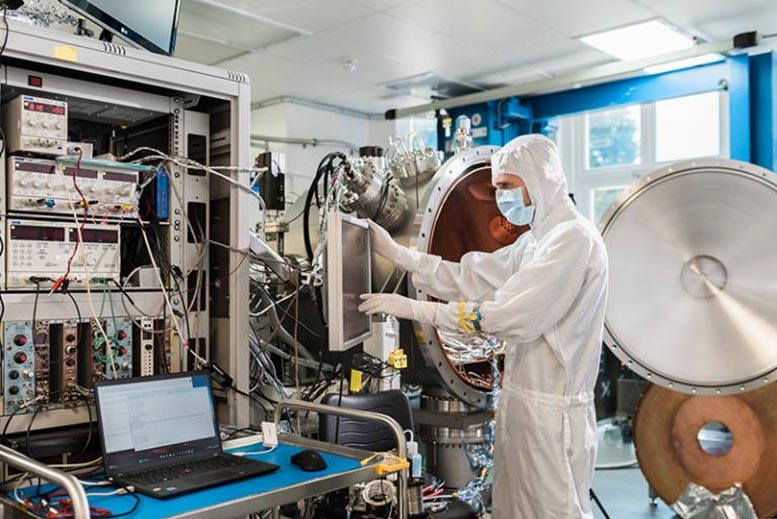
An engineer in a clean room at MSSL testing a plasma analyzer for the Vigil space weather satellite in June 2023. Credit: UCL / James Tye
The laboratory, located in a Victorian mansion in the Surrey Hills, is staffed by 60 engineers and 140 scientists. It has supported 300 space missions. Instruments designed and built at MSSL have reached many corners of the solar system, from Mars to Saturn to close to the Sun, and have helped illuminate the most distant galaxies. A model of Britain’s first rocket, the Skylark, sits at the bottom of a staircase.
When I visit shortly before the Euclid launch, engineers in a clean room (pictured above) are testing a plasma analyzer for a space weather satellite, Vigil (due to launch in the mid-2020s), by firing ions at it. Nitrogen is piped in through tubes to keep instruments cold, mimicking the environment in space.
The Crucial Roles and Challenges in the Euclid Mission
Christine Brockley-Blatt (UCL Mullard Space Science Laboratory) is the project manager for the VIS camera. She was responsible for delivering 12 sets of electronics (and two spares) and supporting their integration on to the spacecraft. (This was done remotely from MSSL, as it was during the pandemic.) It was “extremely complex logistically,” she says, with different bits of equipment being transported back and forth across Europe. As well as extensive engineering knowledge, the role requires patience and people skills. “It’s basically a mum job,” she jokes. “You have to make sure everyone’s OK.”
Data Processing and the Quest for Clarity
Its beaming down of images is, in one respect, only the start of the work. Hundreds of scientists will be involved in processing the raw data into summary statistics that astronomers can compare to our current models of the universe. Grayscale data from VIS will be combined with color data from the ground-based Vera C. Rubin Observatory, and infrared data from the other Euclid instrument, NISP, allowing the team to catalog objects in terms of brightness and their distance away from us. The algorithms that will be used are advanced developments in their own right.
Theories, Expectations, and the Potential Impact of the Euclid Mission
Professor Benjamin Joachimi (UCL Physics & Astronomy) is the deputy lead of the team at the end of this process, whose job it is to coordinate summaries and create an overall view. “If you look at a single galaxy it can’t tell us much,” he explains. “But lots of galaxies can tell us about the properties of the universe.”
This process — part of the ground segment, or ground-based element of the mission — is painstaking but crucial. “Every step of the ground segment has to be perfectly done,” says Professor Joachimi. “Any tiny mistake can mess up the science that comes out at the end. Some of the accuracy requirements can be measured as parts per million.” Euclid’s sharp view of galaxies – its increased resolution compared to previous surveys of the universe – “ups the ante on how accurately we have to process that information.”
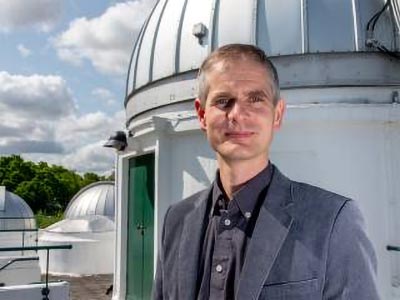
Professor Benjamin Joachimi, at UCL Observatory, where undergraduate students in various disciplines at UCL can learn practical astronomy. Credit: UCL / Mike Lucibella
As well as his role in the ground segment, Professor Joachimi will also be among the scientists investigating how the data compares to what mathematical models of the universe would predict. One key question, he explains, is how “clumpy” the distribution of dark matter is. Analysis of the cosmic microwave background (CMB) – remnants of a burst of light that shot through the universe about 380,000 years after the big bang – predicts that dark matter ought to be more clumpy today than weak lensing techniques currently find it to be. Perhaps some new physics happened to make the matter less clustered. “No one has a good theory to explain it,” says Professor Joachimi. “This is the big puzzle that keeps us awake at night.”
Professor Kitching is among the teams of scientists who will be comparing the summary statistics with models, seeing if they agree with our current understanding of the universe. He, like Professor Joachimi, has been involved in Euclid since its inception. The most impressive aspect of the mission for him, he explains, is not the science but the human dimension. “It’s inspiring because it’s been people from 15 different countries and cultures working together over decades on a really, really complicated experiment,” he says. He hopes it can act as an example for international collaborations aiming to fix problems such as climate change.
The Promise of New Discoveries and Challenges Ahead
Professor Cropper, who has dedicated a large chunk of his working life to Euclid, says he is looking forward to the surprises the telescope will uncover. “People won’t have seen the universe in this level of detail before,” says. “There will be new things in every 10-minute exposure sent to Earth.”
Professor Ofer Lahav (UCL Physics & Astronomy), who was involved in early discussions on Euclid and has initiated UCL’s role in several cosmological experiments, says the mission “will transform our understanding of the dark sectors of the universe and of the formation of superstructures such as clusters and voids.”
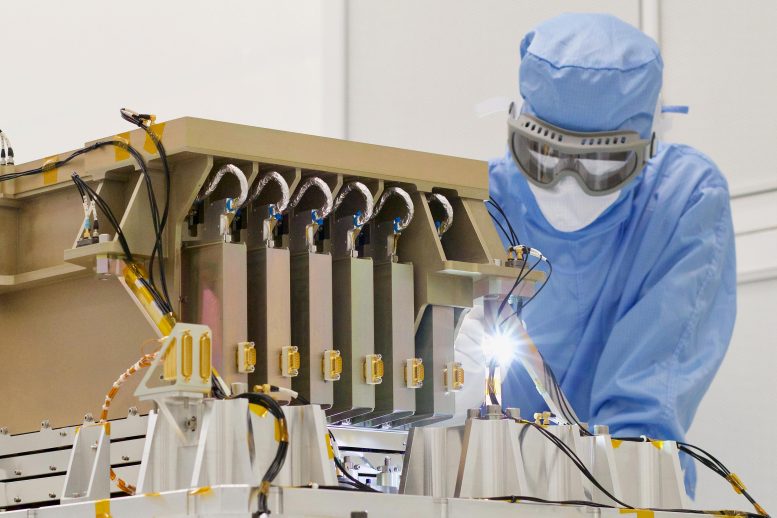
The flight model of the VIS instrument being inspected during vibration testing at Centre Spatial de Liège, Belgium in November 2019. Credit: CEA (Commissariat à l’énergie atomique et aux énergies alternatives)
Shortly before the launch, many were apprehensive about the telescope’s rocket ride into space. Several UCL engineers and scientists, including Professor Cropper and Brockley-Blatt, planned to watch from close by in Florida. The anxiety levels are increasing, said Professor Cropper. “It gets a rough ride on the way up there.”
If the launch is successful, Professor Kitching said, “a revolution in physics is almost guaranteed.”
On July 1, 2023, Euclid successfully launched aboard a SpaceX Falcon 9 rocket from Cape Canaveral Space Force Station in Florida, USA. Its instruments were turned on 11 days later. The spacecraft has now reached the second Lagrangian Point, a stable hovering spot about 1.5 million kilometers (1 million miles) from Earth, joining the NASA-led James Webb Space Telescope and the ESA Gaia mission: UCL-MSSL provided parts of both of those missions too.

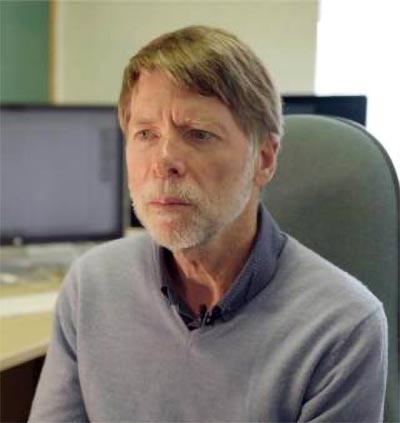

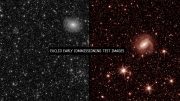
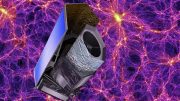
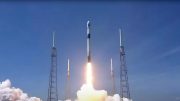
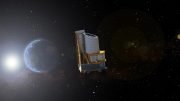

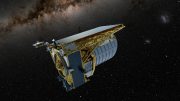
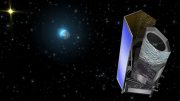
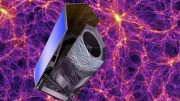
I am excited about this but there is a result within the paradigm the guy describes that is not a revolution and we still have the exact same problem. And Einstein’s theory was never complete like we all accept that so like… He’s making it sound a lot more cut and dry than it is